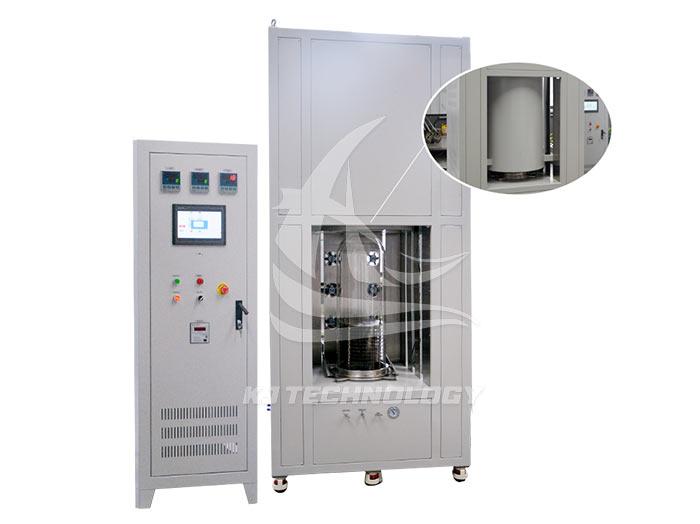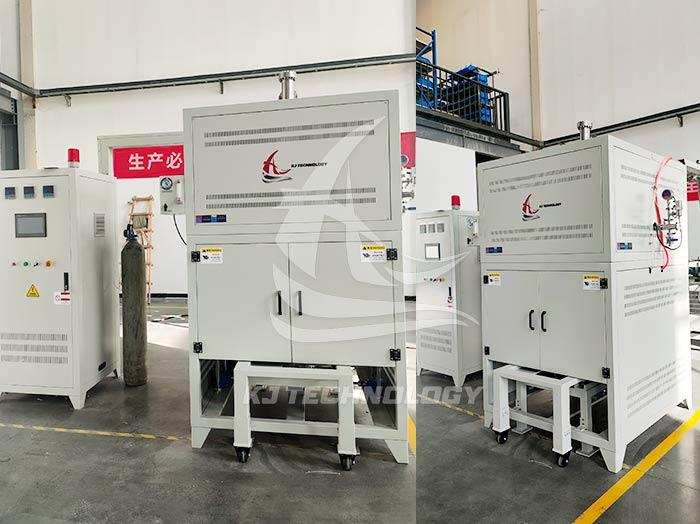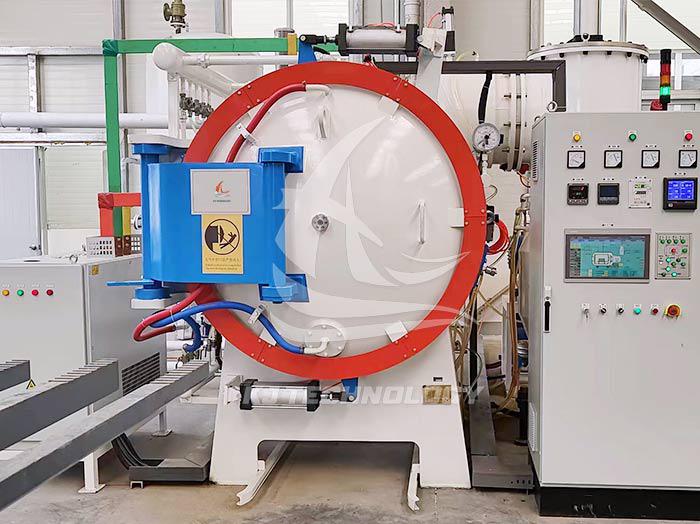Industrial vacuum graphite high-temperature furnace
 11-06-2025 Author: KJ technology
11-06-2025 Author: KJ technology
Industrial vacuum graphite high-temperature furnace is a heat treatment equipment designed specifically for high temperature, vacuum or specific atmosphere environments, widely used in fields such as metals, ceramics, carbon materials, and new energy. The following provides a detailed analysis from five aspects: technical characteristics, application fields, typical equipment parameters, key points of operation and maintenance, and development trends:
1. Technical features
High temperature capability
Using graphite as the heating element, the maximum temperature can reach 2400 ℃, meeting the high-temperature process requirements of carbon material graphitization, metal sintering, etc.
Vacuum and Atmosphere Control
Vacuum environment: The maximum vacuum degree is as low as 5 × 10 ⁻⁶ mbar, which prevents material oxidation or contamination and is suitable for handling sensitive materials.
Protective atmosphere: Inert gases such as argon (Ar), nitrogen (N ₂), or reducing gases such as hydrogen (H ₂) can be introduced to achieve reduction reactions or surface modifications (such as carburizing and nitriding).
Atmosphere replacement: supports rapid switching between vacuum and gas environments, adapting to diverse process requirements.
Rapid temperature rise and fall
Graphite has excellent thermal conductivity, coupled with a closed-loop water cooling system, the heating rate can reach 1-20 ℃/min, shortening the production cycle.
temperature uniformity
The high-end model is equipped with a multi zone temperature control system, with a temperature uniformity of ≤± 10 ℃ in the constant temperature zone, ensuring the heat treatment quality of complex shaped workpieces.
Adopting far-infrared optical temperature measurement technology, the temperature measurement accuracy is higher, and real-time monitoring and automatic temperature adjustment are carried out.
Automation control
Based on PLC+WINCC or artificial intelligence algorithms, achieve process parameter setting, process monitoring, and quality data recording.
Support manual/automatic mode switching to meet different operational needs.
safety protection
Equipped with multiple protection mechanisms such as overheating, overcurrent, disconnection, and power-off to ensure stable operation of the equipment.
The furnace door adopts a water cooling system, and the furnace body is sealed with high-temperature silicone rubber to improve operational safety.
2. Application Fields
Metal industry
Powder metallurgy: sintering and densification treatment of metal powders.
Heat treatment: annealing, quenching, tempering to eliminate processing stress and improve material properties.
Surface modification: carburizing, nitriding, carbonitriding to improve surface hardness and wear resistance.
ceramic industry
Ceramic sintering: densification treatment of ceramic materials such as alumina and silicon nitride.
Graphitization reaction: promotes carbon phase transformation in ceramic materials, enhances conductivity or thermal conductivity.
new energy industry
Lithium battery materials: Negative electrode materials undergo graphitization treatment to enhance battery capacity and cycle life.
Fuel cell: High temperature heat treatment of electrode materials to optimize catalytic activity.
Carbon material processing
Carbon fiber carbonization: Enhancing the strength and modulus of carbon fiber through high-temperature treatment.
Purification of graphite products: removing impurities and improving the purity of graphite.
Semiconductor and Optoelectronic Industry
Semiconductor annealing: repairing lattice defects and improving electrical performance.
Preparation of optoelectronic materials: high-temperature treatment of solar cells, laser crystals, etc.
3. Key points of operation and maintenance
Operating Specifications
Pre inflation inspection: Ensure that the vacuum level inside the furnace meets the standard to avoid danger caused by gas mixing.
Flow control: Adjust the gas flow rate according to process requirements (such as Ar gas flow rate of 2L/min) to prevent pressure fluctuations in the furnace caused by excessive flow.
Cooling water monitoring: Regularly check the flow rate (≥ 40L/min) and pressure (front end ≤ 4bar, reflux 0-2bar) of the water cooling system to prevent overheating and equipment damage.
maintenance
Graphite component inspection: Regularly check the wear of graphite heating elements and replace damaged components in a timely manner.
Vacuum pump maintenance: Inspect the vacuum pump quarterly, replace seals and lubricating oil to ensure stable vacuum level.
Furnace cleaning: Clean the impurities inside the furnace after each use to avoid residue affecting the next process.
Safety precautions
Hydrogen operation: When using hydrogen, it is necessary to stay away from sources of fire and equip with explosion-proof valves and leak detection sensors.
High temperature protection: Wear high-temperature gloves and protective face shields during operation to avoid burns.
Emergency response: Familiarize oneself with emergency plans for abnormal situations such as overheating and overpressure to ensure the safety of personnel and equipment.
4. Development Trends
Intelligent upgrade
Introducing AI algorithms to optimize temperature control, achieve adaptive adjustment of process parameters, and improve the stability of heat treatment quality.
Energy-saving and environmental protection
Adopting new energy-saving heating elements (such as graphene) and optimizing the furnace structure to reduce energy consumption and carbon emissions.
customized service
Customize furnace size, heating power, and temperature control accuracy according to user needs to meet personalized process requirements.
Multi domain expansion
Extend to high-end fields such as aerospace and biomedicine, and promote technological progress in related industries.








